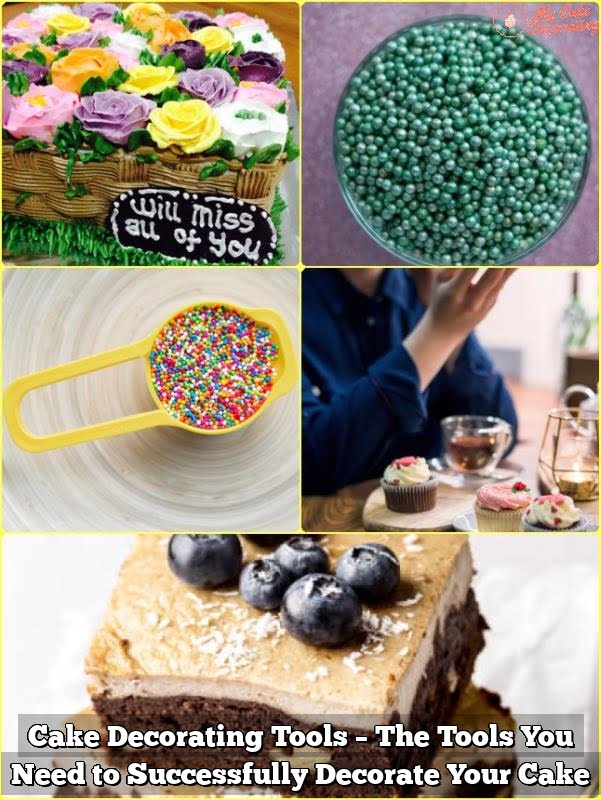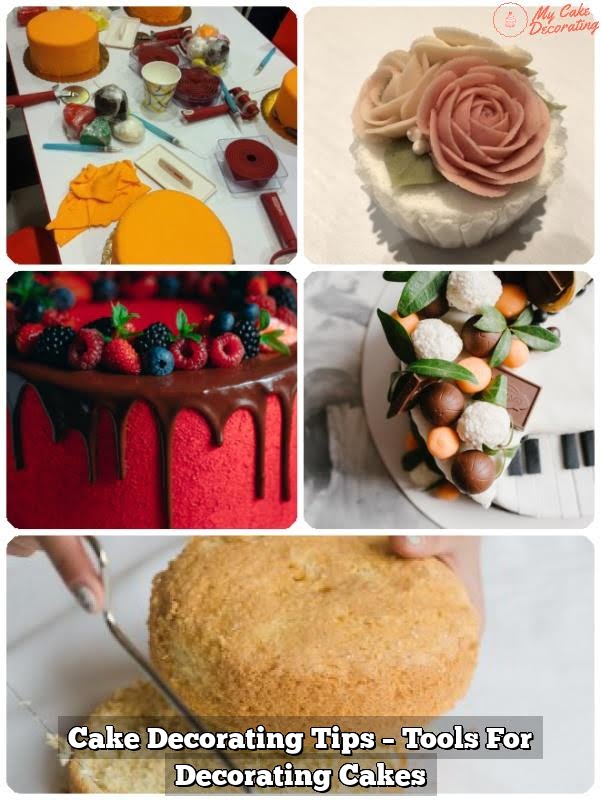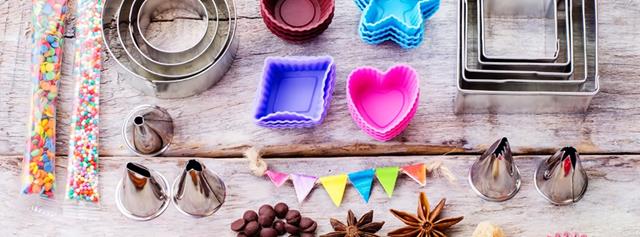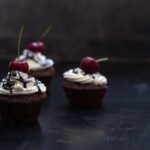Cake decorating is a fun and creative way to add a personal touch to your baked creations. Whether you’re a beginner or an experienced baker, mastering the art of cake decorating can take your desserts to the next level. In this article, we will explore the essential cake decorating tools and equipment, as well as provide tips and techniques for creating stunning designs on your cakes.
Learning how to use the cake decorating tools properly is essential for achieving professional-looking results. From piping bags and tips to fondant tools, understanding how to utilize these tools effectively can make all the difference in your cake decorating endeavors. With the right knowledge and practice, you’ll be able to create beautiful and intricate designs that will impress friends and family alike.
In addition to covering the basics of cake decorating, this article will also delve into more advanced techniques such as working with fondant, gum paste, and royal icing. You’ll learn how to troubleshoot common issues like cracks and air bubbles, as well as discover tips for choosing the right decorations to enhance your designs.
Whether you’re looking to elevate your baking hobby or pursue a career in cake decorating, this comprehensive guide will provide you with all the information you need to get started.
Essential Cake Decorating Tools and Equipment
When it comes to cake decorating, having the right tools and equipment is essential for creating beautiful and professional-looking cakes. Whether you’re a beginner or an experienced baker, having a comprehensive set of cake decorating tools is crucial. In this section, we will discuss the essential cake decorating tools and equipment that every baker should have in their arsenal.
Piping Bags and Tips
Piping bags and tips are indispensable tools for cake decorating. Piping bags allow you to easily pipe frosting, buttercream, royal icing, or even melted chocolate onto your cakes. Paired with different piping tips, you can create a variety of designs and patterns, such as rosettes, shells, leaves, and more. When using piping bags and tips, it’s important to practice proper technique to achieve clean lines and consistent decorations.
Offset Spatula
An offset spatula is a versatile tool that is used for spreading frosting and smoothing the surface of cakes. Its angled blade allows for easy maneuvering around the sides of the cake and helps create a smooth and even finish. Additionally, an offset spatula can be used for lifting delicate decorations or transferring fondant onto the cake.
Fondant Smoother
For those who work with fondant, a fondant smoother is an essential tool for achieving a flawless finish on cakes covered with fondant. This tool helps eliminate air bubbles and creases while smoothing out the surface of the fondant for a professional look. Using a fondant smoother properly ensures that your fondant-covered cakes look polished and well-executed.
Essential Cake Decorating Tools
laying gloves are also recommended when working with food coloring or intricate designs to avoid staining your hands as well as to maintain hygiene in your baking process. By having these essential cake decorating tools in your collection and mastering their use, you will be well-equipped to create beautifully decorated cakes for any occasion.
Preparing the Cake
When it comes to cake decorating, one of the most important steps is preparing the cake itself. This involves ensuring that the surface of the cake is smooth and even, providing a solid foundation for your decorative elements. To achieve this, there are a few tips and tricks that can help you get the perfect canvas for your creative designs.
First, it’s essential to level your cake layers before you start decorating. Uneven layers can result in an unstable base and an uneven surface for decorating. You can use a long serrated knife or a cake leveler to carefully trim any domed tops and create a flat, even surface.
Next, consider applying a crumb coat of frosting to the cake before adding your final layer of frosting or fondant. This thin layer of frosting helps to seal in any loose crumbs and creates a smooth surface for your final decorations. It’s an essential step in achieving a professional-looking finished product.
Finally, make sure that your cake is fully cooled before you begin decorating. Warm cakes can cause frostings and icings to melt or become runny, leading to a sloppy finished product. Allowing your cake to cool completely will ensure that your decorations stay in place and look their best.
| Tips | Tricks |
|---|---|
| Level your cake layers | Apply a crumb coat of frosting |
| Use a long serrated knife or cake leveler | Allow your cake to cool completely |
Basic Techniques
When it comes to cake decorating, mastering basic techniques such as piping, frosting, and icing is essential for creating beautiful and delectable designs. Whether you’re a beginner or an experienced baker, understanding how to use the cake decorating tools for these techniques can take your creations to the next level.
Piping Techniques
Piping is a fundamental skill in cake decorating that involves using a pastry bag and various tips to create intricate designs with buttercream or royal icing. To start, ensure that your pastry bag is fitted with the desired tip and filled with the appropriate icing.
Practice different pressure levels and hand movements on a smooth surface before applying it to your cake. Experiment with different tips and piping techniques such as rosettes, shells, and borders to add texture and visual interest to your design.
Frosting Like a Pro
Frosting is more than just spreading icing on a cake – it involves achieving a smooth and even finish that provides the perfect canvas for decorations. To achieve this, apply a thin layer of icing as a crumb coat, then refrigerate the cake until firm before adding a final layer of frosting.
Use an offset spatula to spread the frosting evenly across the top and sides of the cake, working from the center outward. Smooth out any imperfections with a bench scraper or comb for a professional-looking finish.
Mastering Icing Techniques
Icing can add both flavor and flair to your decorated cakes, whether you opt for buttercream or royal icing. For buttercream, understanding the consistency is crucial – soft peaks are ideal for spreading while stiff peaks are best for piping intricate designs. Royal icing should be thin enough to flow smoothly from a piping bag but thick enough to hold its shape once piped onto the cake.
Experiment with different textures and consistencies to find what works best for your desired design. Understanding how to use these different types of icings will allow you to create stunning decorative elements on your cakes that will impress any audience.
By honing your skills in piping, frosting, and icing techniques, you’ll be well-equipped to take on any decorating challenge while also getting one step closer to becoming a master cake decorator. Practice makes perfect – so don’t be afraid to experiment with different tools and methods until you find what works best for you.
Advanced Techniques
Once you have mastered the basic techniques of piping, frosting, and icing, you may want to explore more advanced methods such as working with fondant, gum paste, and royal icing. These three elements open up a whole new world of creative possibilities for decorating cakes, allowing you to create intricate designs and elegant decorations.
Fondant is a smooth and pliable sugar paste that can be rolled out and draped over a cake for a flawless finish. Gum paste is similar to fondant but dries harder, making it ideal for creating delicate flowers, figurines, and other detailed decorations. Royal icing, on the other hand, is a hard white icing made from egg whites and powdered sugar that can be used to create intricate designs or to secure decorative elements onto the cake.
To use these advanced cake decorating tools effectively, it’s important to familiarize yourself with the techniques involved. For example, when using fondant, it’s crucial to roll it out evenly and gently drape it over the cake without tearing or stretching it. When working with gum paste, you’ll need to learn how to sculpt flowers or figures with precision. And when using royal icing, mastering the art of piping fine lines and intricate details will take practice.
Incorporating these advanced techniques into your cake decorating repertoire will elevate your creations to the next level. With patience and practice, you’ll soon be able to create stunning cakes adorned with intricate fondant designs, delicate gum paste flowers, and elegant royal icing details that will impress any audience.
Choosing the Right Decorations
When it comes to cake decorating, choosing the right decorations is essential for creating visually appealing and delicious treats. There are numerous options available, including sprinkles, edible pearls, and colorful fondant shapes.
To ensure that you select the best decorations for your cake, consider the theme or occasion of the event. For example, if you are decorating a cake for a child’s birthday party, colorful sprinkles and fondant shapes in fun designs such as animals or flowers may be ideal.
On the other hand, if you are creating a cake for a more elegant event such as a wedding or anniversary, delicate edible pearls and sophisticated fondant designs may be more suitable.
How to Use Different Cake Decorating Tools
Once you have chosen your decorations, it’s important to know how to use them effectively to achieve the desired look for your cake. Here are some tips on how to use the most common cake decorating tools:
- Piping bags and tips: Fill a piping bag with frosting or icing and attach a decorative tip of your choice. Squeeze the bag gently while holding it at a slight angle to create beautiful borders, rosettes, and other designs on your cake.
- Fondant tools: If you are using fondant to create shapes or cover your cake, invest in quality fondant tools such as rolling pins, cutters, and shaping tools. These will help you achieve clean edges and flawless designs.
- Edible decorations: To apply sprinkles, edible pearls, or fondant shapes to your cake, use tweezers or food-safe brushes to carefully place them where desired. This will allow for precision and prevent smudging or shifting of decorations.
By understanding how to effectively use these cake decorating tools and decorations, you can elevate your cakes from simple desserts to stunning works of art that will impress any crowd at your next event.
Troubleshooting Common Cake Decorating Issues
When it comes to cake decorating, there are a few common issues that may arise during the process. One of these issues is the appearance of cracks on the surface of the cake. This can happen due to various reasons such as overmixing the batter, baking the cake at too high of a temperature or removing it from the pan too soon. To prevent this issue, make sure to follow the recipe instructions carefully and avoid overmixing the batter.
Air bubbles in frosting or icing can also be a common problem when decorating a cake. These air bubbles can create an uneven and bumpy surface on your cake. To avoid this issue, make sure to gently tap the frosted cake on a countertop to release any trapped air bubbles. Additionally, using a small offset spatula or bench scraper can help smooth out the frosting and eliminate any remaining air bubbles.
Finally, achieving a perfectly even surface on your decorated cake can be challenging. Uneven surfaces may occur due to uneven baking or improper leveling of the cake layers. Using a long serrated knife or a cake leveler can help you trim off any uneven areas and ensure that your cake has a smooth and level surface for decorating.
To prevent these common decorating issues from occurring, it’s important to have the right tools and techniques at your disposal. Understanding how to use the cake decorating tools effectively will greatly improve your overall results when creating decorative cakes.
| Cake Decorating Issue | Prevention Tips |
|---|---|
| Cracks on the Surface | Follow recipe instructions carefully; avoid overmixing batter |
| Air Bubbles in Frosting/Icing | Gently tap frosted cake to release air bubbles; use offset spatula for smoothing |
| Uneven Surfaces | Level cakes properly with long serrated knife or cake leveler |
Putting It All Together
When it comes to creating a stunning decorated cake, having the right tools and equipment is crucial. Here is a comprehensive guide on how to use the cake decorating tools to achieve professional-looking results:
1. Piping bags and tips: Fill a piping bag with your preferred frosting or icing, then twist the top of the bag to secure the contents. Place a piping tip at the bottom of the bag, making sure it is tightly secured. Hold the bag with one hand and use your other hand to guide the tip while applying pressure to create different designs such as rosettes, borders, and writing.
2. Offset spatula: Use an offset spatula to evenly spread frosting or icing on the cake’s surface. Hold the spatula at a 45-degree angle and apply gentle pressure as you spread the frosting in smooth, even strokes.
3. Fondant smoother: When working with fondant, use a fondant smoother to eliminate any air bubbles and create a polished finish on the surface of your cake. Gently press the smoother against the fondant and move it in circular motions to achieve a flawless look.
Now that you understand how to use these essential cake decorating tools, you can confidently move on to creating your masterpiece. With practice and patience, you’ll be able to showcase your creative skills through beautifully decorated cakes that will impress everyone who sees them.
Conclusion
In conclusion, mastering the art of cake decorating takes time, practice, and patience. By understanding the basics of cake decorating and familiarizing yourself with essential tools and equipment, you can start on the right foot. Preparing the cake with a smooth and even surface is crucial for a professional-looking result, and learning basic techniques such as piping, frosting, and icing will give you a strong foundation to build upon.
As you become more confident in your skills, don’t be afraid to experiment with advanced techniques like working with fondant, gum paste, and royal icing. These decorative elements can elevate your cakes to new levels of creativity and beauty. Additionally, choosing the right decorations such as sprinkles, edible pearls, and colorful fondant shapes can add an extra layer of visual interest to your creations.
Finally, don’t get discouraged by common issues that may arise during the decorating process. Instead, use them as learning opportunities to troubleshoot and improve your skills. With dedication and perseverance, you can perfect your cake decorating abilities over time.
Remember that practice makes perfect – so keep honing your craft and soon you’ll be creating stunning decorated cakes with ease. Now that you understand how to use the cake decorating tools properly, it’s time to put everything into practice.
Frequently Asked Questions
How Do You Use Cake Decorating Tools?
Cake decorating tools are used to add intricate designs, shapes, and textures to a cake. These tools can include piping bags, tips, spatulas, stencils, fondant rollers, and molds. They are utilized to create beautiful and visually appealing cakes for various occasions.
What Do You Think Are the 3 Most Important Tools When Decorating a Cake?
The three most important tools when decorating a cake are piping bags and tips, offset spatula, and a turntable. Piping bags and tips are essential for creating intricate designs and borders, while an offset spatula is used for smoothing icing and applying layers. A turntable allows for easy access to all sides of the cake while decorating.
How Do You Use a Cake Decorating Gun?
To use a cake decorating gun, you would first load it with frosting or icing following the manufacturer’s instructions. Then, simply hold the gun in your dominant hand, apply pressure to the trigger with your other hand while guiding the movement over the cake surface. This creates unique designs or lettering on the cake effortlessly.

Welcome to my blog about home and family. This blog is a place where I will share my thoughts, ideas, and experiences related to these important topics. I am a stay-at-home mom with two young children. I hope you enjoy reading it! and may find some helpful tips and ideas that will make your home and family life even better!





